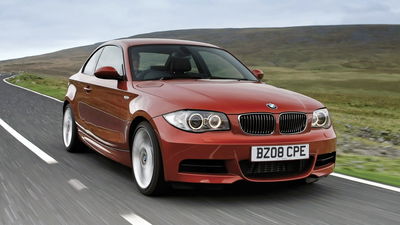Here's Why Ferrari's Old 'Flat-12' Isn't Exactly A Flat-12 At All

If you’re a keen watcher of automotive content on YouTube, you may have recently stumbled upon Doug Demuro’s review of the oh-so-eighties Ferrari Testarossa. While going about his usual business of discovering the wonderful quirks of the car in question, he happened to mention that the Testarossa featured a V12 engine, leading to some arguments in the comments. After all, it’s a flat-12, isn’t it? Well, not quite. While the car’s engine is often referred to as a flat-12, it is technically correct to call it a V12.
Although the pistons in the Testarossa’s 12-cylinder are horizontally opposed, the engine isn’t what the automotive world classifies as a flat or boxer engine. To investigate the differences, let’s first take a look at the specific mechanical aspects of the Ferrari powertrain.

The Ferrari ‘flat-12’ is actually a 180-degree V12. Using the engine block shared with the 312B and 312PB racers and multiple components from the Tipo 251 60-degree Colombo V12, this horizontal engine was found in the Ferrari 365 GT4, 512/512i and the aforementioned Testarossa. Manufactured in 4.4 and 4.9-litre form, this series of engine peaked at 428bhp in the Ferrari 512 TR M.
The difference between this engine and a boxer comes down to the crankpins. In the Ferrari, each set of opposing pistons share a crankpin, compared to the individual crankpin layout of a boxer. This means that each opposing piston reaches top dead centre (TDC) while its opposing piston reaches bottom dead centre (BDC), essentially forming a tug-of-war between them.
Proper boxer engines can be found powering the likes of Porsches and Subarus, creating a wonderful burble. The mechanical layout of a boxer engine dictates that each piston has its own individual crankpin.
This means each set of pistons reaches TDC and BDC at the same time and this equality in reciprocation leads to the primary and secondary forces of the engine being fully balanced. This makes for a smooth-running powerplant and a light crankshaft can be used without the need for counterweights, producing a faster-revving engine. As with Ferrari’s ‘flattened V12’, the layout also means that an engine can be mounted nice and low within an engine bay, lowering the centre of gravity and improving handling.

Unfortunately, the bosses at Maranello made this whole V12/flat-12 thing more complicated by using the name ‘Berlinetta Boxer’ for the 365 GT4 and 512/512i, even though the boxer term was technically incorrect. So, it is easy to see where the confusion and corresponding arguments come from.














Comments
THANK YOU.
so a v12 boxter engine?
it’s a 60deg. V12, rather than an entirely flat F12
A flat engine is flat in its configuration, crank pin offset doesn’t change what is a description of the cylinder layout. There have been engines like the first Buick V6, that had two cylinders sharing a crank pin, and their later efforts then changed to a split crank pin. These have never been referred to as anything other than a V6, regardless of their crank. Early V8 engines used a flat, or flat plane crank, with each two rod crank pin being 180% from each other. These engines were always referred to as a V8, as that is the cylinder configuration.
A flat engine will have pistons that move in opposite directions to each other, and the timing of their movement makes no difference to the configuration. Offset crank pins can never turn a flat engine into a vee configuration. You can argue that it’s not a true boxer if you care enough, but it’ll never be anything
other than a flat engine.
Pagination